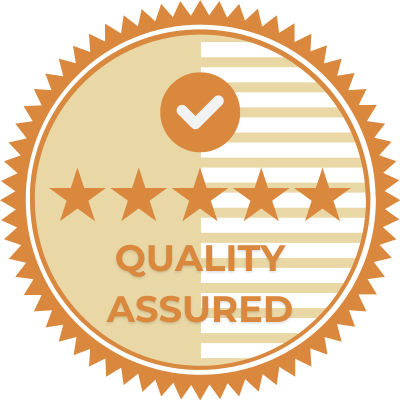Introduction
Microbial contamination is an issue that affects individuals and communities worldwide, including here in the UK, where countless people become ill each year after consuming contaminated food. These illnesses can range from a mild upset stomach to conditions that pose serious threats to public health. If you reflect on your own daily life—whether you are selecting fruit and vegetables at a local market, preparing meals in your kitchen, or enjoying dinner at your favourite bistro—you may begin to wonder: how do you monitor food safety in your own setting?
At FoodComplianceHQ, we work to help individuals, businesses, and organisations in the UK adopt safer food handling practices. By cutting through the complexity of regulations and offering training that is both practical and accessible, our Food Hygiene Level 2 Certificate course empowers people to integrate high standards into their everyday routines. This might mean checking that your fridge is kept at the correct temperature, reconsidering how you store raw meat separately from fresh produce, or ensuring that you wash your hands thoroughly and frequently. Rather than thinking of food safety as a daunting set of rules, it can be viewed as a series of mindful daily habits, each one contributing to a safer, more reliable food supply.
In this series, we will delve into the world of microbial contamination, exploring how and why harmful organisms find their way into our food. We will look at the fundamental factors, from improper cooking and storage to cross-contamination caused by using the same chopping board for raw chicken and ready-to-eat foods. More importantly, we will link these lessons to real-life situations in homes and workplaces. Preventing contamination need not be complicated; it can begin with something as simple as ensuring your refrigerator remains below 5°C, regularly sanitising your work surfaces, and staying well informed about best practice guidelines from authorities such as the Food Standards Agency (FSA).
By the end of this series, our aim is that you not only understand the root causes of microbial contamination and the proven methods to prevent it but that you also feel capable of assessing your own decisions, habits, and surroundings. Whether you run a small café, work in a busy catering environment, or simply cook meals for your family at home, you have a vital role in keeping food safe. Consider, for instance, how thoroughly you wash your utensils or how quickly you refrigerate cooked leftovers—these small actions can have a significant impact on safeguarding the health of those who enjoy your meals.
Understanding Microbial Contamination
Microbial contamination occurs when unwanted microorganisms, including bacteria, viruses, fungi, and parasites, find their way into the foods we consume. They are often invisible to the naked eye, yet their presence can lead to severe health problems if not effectively controlled. Some bacteria, such as Salmonella or E. coli, are infamous for the illnesses they cause if allowed to multiply in poorly handled or stored foods. Viruses like Norovirus, which can spread through contaminated water or unclean surfaces, also pose a serious challenge. Moreover, certain fungi and parasites can be introduced into food supplies, especially if sourcing and storage practices are not sufficiently stringent.
Understanding these threats is not merely a matter of regulations and guidelines; it is about safeguarding public health. Being aware of the conditions that foster microbial growth, such as leaving food at room temperature for too long, can help you take proactive measures to protect yourself and others. After all, safe food handling need not be burdensome: checking use-by dates on products, washing your hands before and after handling raw ingredients, and ensuring that cooked foods reach safe internal temperatures are all straightforward steps that can significantly reduce your risk of contamination.
Recognising the “Danger Zone”
Temperature control is one of the most critical aspects of preventing bacterial growth. The range commonly referred to as the “danger zone” is between 5°C and 63°C, where harmful bacteria multiply most rapidly. Following best practices means keeping your refrigerator consistently below 5°C and using a food thermometer to confirm that meats, poultry, and fish reach safe internal temperatures. When cooling leftovers, it helps to use shallow containers and place them in the fridge promptly rather than letting them linger on the kitchen counter. These simple yet essential measures keep foods out of the danger zone, making it far less likely that harmful microbes will pose a threat to anyone enjoying a meal.
Preventing Contamination in Everyday Life
Prevention begins with regular routines and careful thinking. How do you currently store raw produce and meat at home? Do you use separate chopping boards to avoid cross-contamination, and are you confident that your sanitising methods are effective? In a professional setting, such as a café or a school kitchen, are you following best practice guidelines to ensure that each member of staff understands and respects food safety protocols? Reflecting on these everyday actions can lead you to identify small changes that make a big difference.
Consistency is key. Washing your hands thoroughly with hot water and soap before handling food and doing so again whenever you switch between raw and ready-to-eat ingredients is one of the simplest and most effective measures. Ensuring that kitchen worktops are cleaned and sanitised regularly and that perishable items are correctly stored further reduces the risk of harmful microbes gaining a foothold. By embedding these habits into your daily life, you transform theoretical concepts into tangible safety nets that protect you, your loved ones, and your customers from preventable illnesses.
Conclusion
Understanding microbial contamination and the factors that contribute to it is a necessary step towards making informed decisions about food safety. By recognising the habits and conditions that allow harmful organisms to thrive and by adopting proven methods such as strict temperature control, proper sanitation, and thorough cooking techniques, you become an active participant in preventing foodborne illnesses. The goal is not to instil fear but rather to build confidence and encourage self-reflection.
The question is: how do you monitor and improve food safety in your own environment, day after day?
If you are ready to deepen your understanding and sharpen your skills, consider enrolling in FoodComplianceHQ’s Food Hygiene Level 2 Certificate course. Our programme translates regulation into practical know-how, enabling you to apply learned principles in everyday contexts. Investing in your knowledge and skills today lays the groundwork for a future where every meal, whether served in a family dining room or a bustling British café, is prepared with the utmost care and attention. By doing so, you help create a safer and healthier dining culture that benefits everyone.




